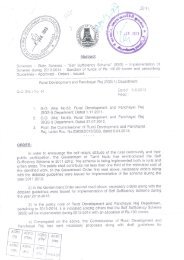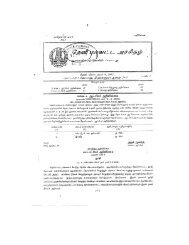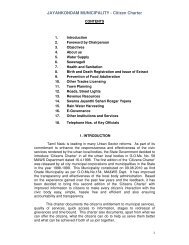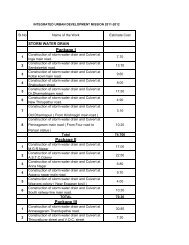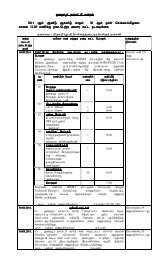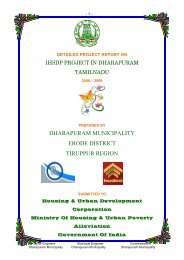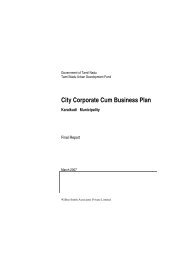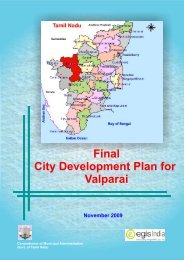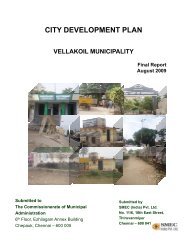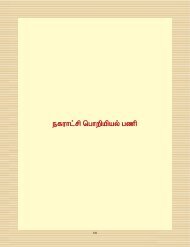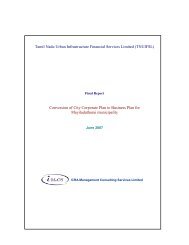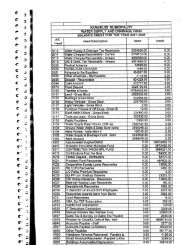City Corporate & Business Plan - Municipal
City Corporate & Business Plan - Municipal
City Corporate & Business Plan - Municipal
You also want an ePaper? Increase the reach of your titles
YUMPU automatically turns print PDFs into web optimized ePapers that Google loves.
Annexure Final Report: Ambur <strong>Municipal</strong>ity<br />
History of Ambur Cluster<br />
Annexure III: Performance of Ambur Leather Cluster<br />
The emergence of Madras as a major trading center for leather during the British<br />
rule inspired the people in the trade to put up tanneries. Since tanning required<br />
plenty of water, the river system nearer to Madras, namely, the Palar River basin was<br />
the natural choice. It had copious flow of clean water. The next requirement was<br />
transport to Madras, which was the gate way port for export of leather ñ a<br />
distinction that the port holds even today after more than a century. Vaniyambadi,<br />
Ambur, Pernambut and Ranipet, which fulfilled the basic requirements, attracted<br />
the leather men. Vaniyambadi was the first center, followed by Ambur and in both<br />
places the business is more than 100 years old.<br />
Slow growth due to traditional processing<br />
The process of evolution of leather tanning into mechanized industry has rather<br />
been slow in India and Ambur was no exception. For more than 50 years, tanning<br />
was essentially a manual operation. The process was known as vegetable tanning<br />
and the method was bark tanning. The transformation from household activity to<br />
mass production methods in separate premises engaging a group of workers took<br />
place in the forties. It was in the fifties that mechanically driven drum was<br />
introduced and tanning with wattle extract was extensively used. The vegetable<br />
tanning otherwise popularly known as East India (E.I) tanning, dominated the Ambur<br />
leather industry for the next 25 to 30 years. The phase of mechanization gained<br />
momentum in the seventies and eighties with the introduction of chrome tanning,<br />
necessitated by the increasing demand for chrome tanned leather in international<br />
markets.<br />
Pollution due to tannery effluent<br />
Environmental degradation caused by effluents let out by tanneries in Tamil Nadu<br />
was worrying the State Government even when vegetable tanning was done. In<br />
1939 itself, the then Provincial Government constituted a committee to suggest ways<br />
and means to treat the effluents let out by the tanneries. Since then a series of<br />
committees have been constituted by the State Government and time and again<br />
the tanneries were told to put up effluent treatment plants.<br />
As the flow of water dwindled in Palar river due to construction of check dams in<br />
upstream by Karnataka and Andhra Pradesh through which the river flows before<br />
entering TamilNadu, the level of pollution in Palar basin increased, affecting drinking<br />
water supply to a number of villages. Alarmed by this development, the Vellore<br />
Citizens Forum filed a writ petition in the Supreme Court in 1991.<br />
Tanneries left with no other alternative but to put up ETPs or CETPs not only in Vellore<br />
district but also in other parts of Tamil Nadu, to put up individual or common effluent<br />
- 184 -<br />
Voyants Solutions Private Limited



